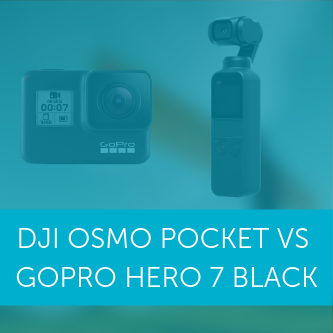
Products
DJI Osmo Pocket v GoPro Hero 7 Black
The new Osmo Pocket is here. In this post, we see how it stacks up against the GoPro Hero 7 Black. Compare image quality, battery life and more. ... Read More
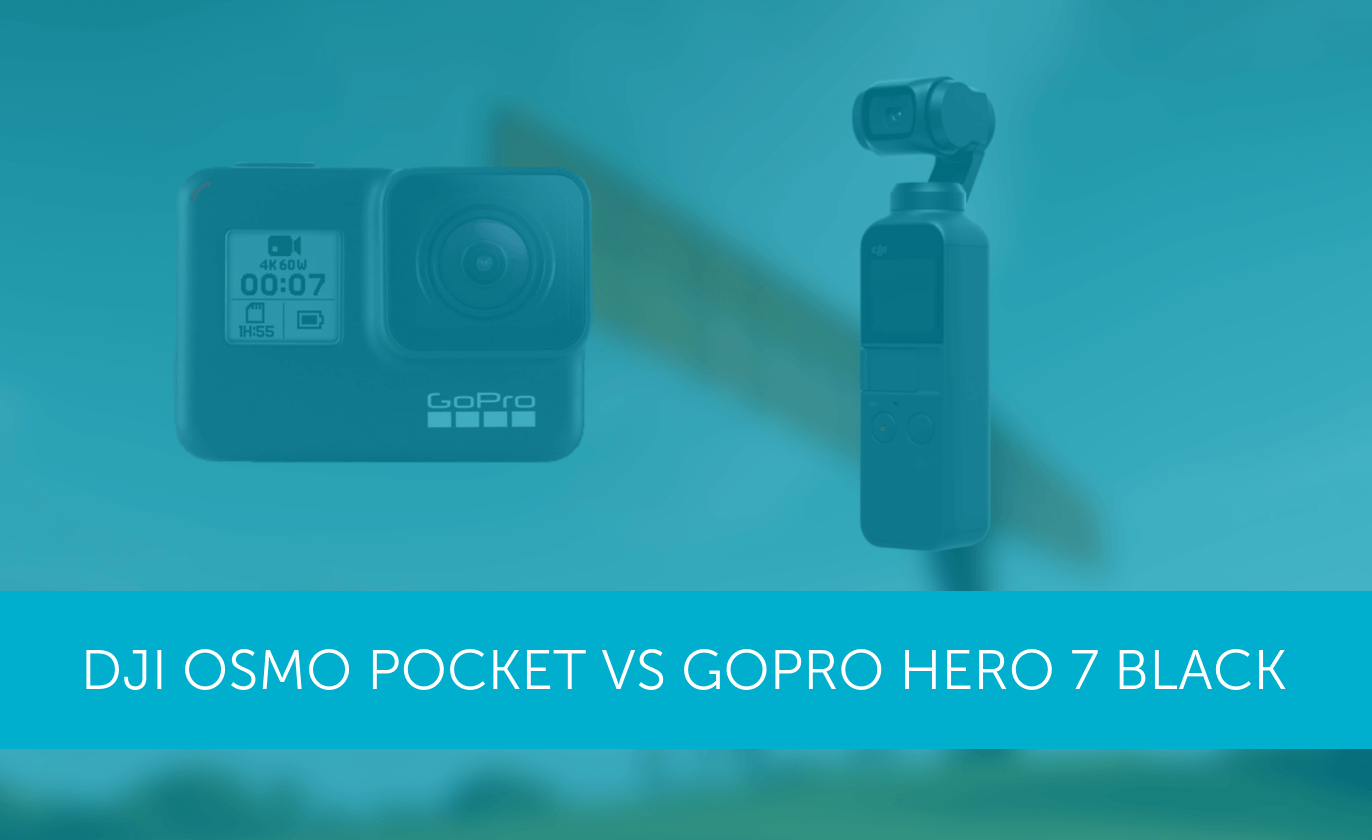
A new camera war has begun.
At the end of September/beginning of October, GoPro unveiled its flagship Hero 7 Black - described as the most versatile waterproof GoPro action and travel camera.
But last week, DJI threw its hat into the ring, lifting the curtain on its much-anticipated Osmo Pocket.
It's the technology equivalent of Muhammad Ali v Joe Frazier. Two heavyweights going toe-to-toe, vying for top spot. But which one of these state-of-the-art cameras - both boasting incredible stabilisation technology - is king of the ring?
In this special versus article, Heliguy Insider takes a look at both products and analyses which one packs the biggest punch.
TALE OF THE TAPE
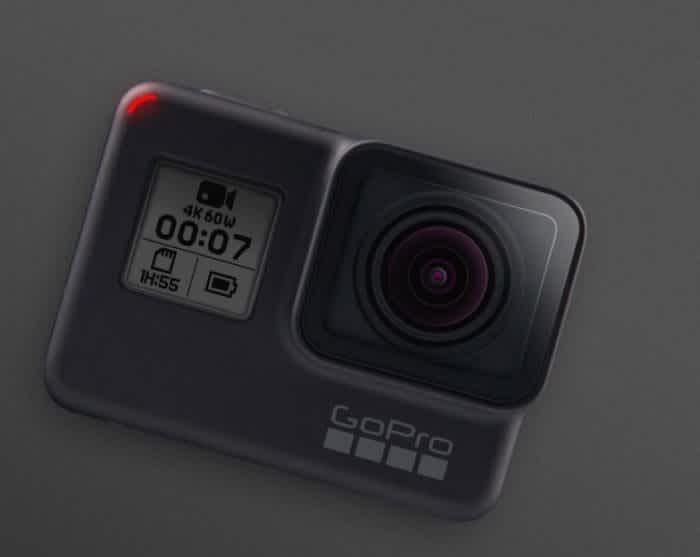
GoPro Hero 7 Black
£379
62mm W x 44.9mm H x 33mm D
Shoots 4K video at 60fps and 12-megapixel stills (with SuperPhoto)
Electronic stabilisation
Modes include Voice Control, Time Lapse and Slo-Mo
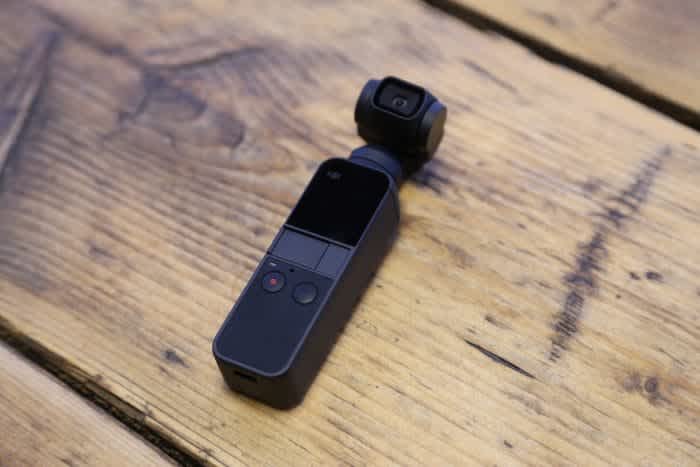
DJI Osmo Pocket
£329
28.6mm W x 36.9mm D x 121.9mm H
Shoots 4K video at 60fps and 12-megapixel stills
Mechanical gimbal stabilisation
Modes include ActiveTrack, 3×3 panorama, NightShot and Motionlapse
HOW MUCH?
So, perhaps the burning question is how much will you have to fork out for either of these cameras? Well, the GoPro Hero 7 Black has a price tag of £379, which includes a 64GB microSD card.
The DJI Osmo Pocket costs £329, but does not come with an SD card. DJI recommends a SanDisk Extreme microSD Card, with the 64GB available for £31 or the 128GB option priced £61. A 32GB Samsung microSD Card is included in an Expansion Kit, priced £99.
On that note, accessories are available for both cameras, which will add to your bill, but will take your photographic journeys much further. A look at these add-ons will be explored later in this blog.
In terms of availability, you can get the Hero in your hands now, while pre-orders are currently being taken for the Pocket, which is expected to be released for sale later this month, but, due to high demand, shipment dates can't be confirmed at the moment.
LOOK AND KEY SPECIFICATIONS
The GoPro Hero 7 Black looks largely identical to previous iterations from the company. It is a compact and sturdy bit of kit and looks ready to be thrust into the thick of high-octane activities. It has a one-inch sensor and a two-inch touchscreen. It weighs 116g and measures 62mm W x 44.9mm H x 33mm D.
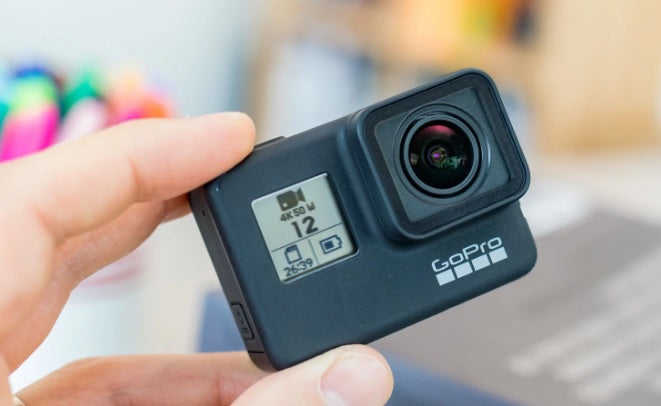
While the Hero 7 is square in shape, the DJI Osmo Pocket is rectangular, with a three-inch handle, which includes the one-inch touchscreen and a USB port for connectivity with your smartphone. With its single-handed design, the teeny-tiny Osmo Pocket is incredibly portable and feels very well built. It tips the scales at 116g and measures 28.6mm W x 36.9mm D x 121.9mm H.

TO GIMBAL OR NOT TO GIMBAL?
Both devices boast top-class image and footage stabilisation - but achieve this in vastly different ways. And this is probably the biggest contrast between the pair.
The GoPro Hero 7 Black has the so-called HyperSmooth stabilisation - a version of electronic image stabilisation and works in its 4K/60fps mode. This is still digital rather than optical stabilisation, though GoPro's website states that it will provide 'gimbal-like stabilisation – without the gimbal'.
On the other side of the coin, the Osmo Pocket comes with a mechanical gimbal. In fact, those innovators at DJI have managed to kit the Pocket out with the smallest three-axis gimbal in the company's history, equipped with tilt, roll and pan motors.
So, how do these differences in approach actually impact the end result?
Well, it's fair to say that the Hero 7 Black’s electronic image stabilisation is easily the company's best yet, but there are draw backs, such as it has to scale the image up to make the shot fill the frame the more stabilisation it has to do. In addition, to stabilise the footage, the image is cropped by 10%, altough, with such a wide lens, the footage still looks very wide.
The Osmo Pocket meanwhile makes full use of its mechanical gimbal, which avoids the hurdles of electronic image stabilisation and achieves some really smooth footage.
CAPTURING QUALITY FOOTAGE
Both cameras shoot 4K video at 24, 30 and 60FPS, but one thing that you get on the Hero 7 is the ability to shoot 2.7K at 120FPS, or 1080P at 240FPS.
In terms of shooting in low light, the Osmo Pocket has a wider aperture, at f/2.0, compared to the Hero 7 Black’s f/2.8 - theoretically making it better in such conditions.
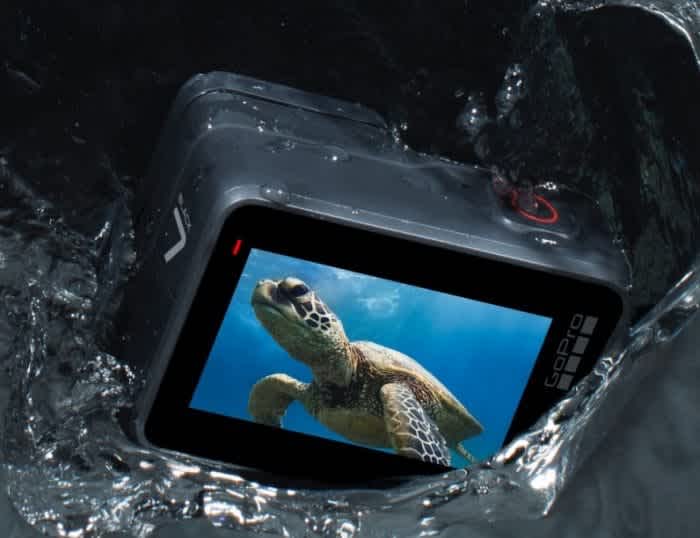
GoPro Hero 7 Black
Sensor: 1-CHIP CMOS
Image size: 12MP
ISO Range: Photo - 100-3200 (Auto). Video - 100-6400 (Auto).
Video resolution: 4k 60 (wide)
Max video bitrate: 78Mbps
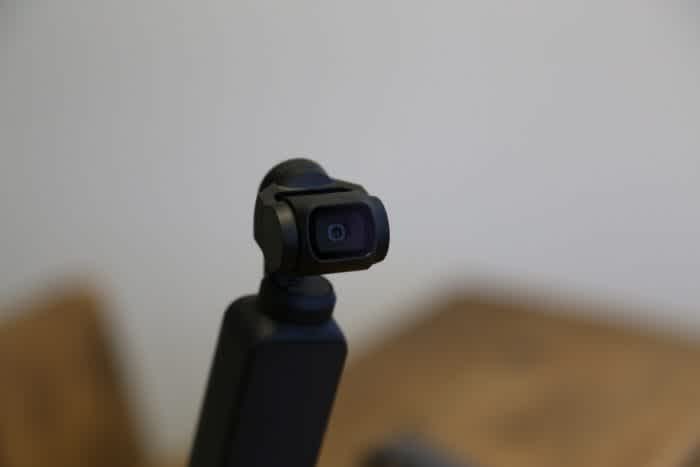
Osmo Pocket
Sensor: 1/2.3 CMOS
Image size: 12MP
ISO Range: Photo - 100-3200. Video - 100-3200.
Video resolution: 4K 60FPS
Max video bitrate: 100Mbps.
The Hero 7 is waterproof up to 10 metres. In contrast, upon its release, the Osmo Pocket cannot currently be submerged in water. But panic not! DJI is due to release a waterproof case accessory in the coming months, which will then allow users to go to depths of up to 60m for smooth underwater shots, detailed close-ups and clear low-light detail. That is a truly impressive depth, but it will just depend if photographers want to splash out on purchasing the accessory on top of the outlay for the camera itself. The price of the waterproof case is yet to be announced.
PROTUNE v DJI MIMO
Both the Hero and the Pocket have features to draw out the best image possible.
The Hero 7 Black has Protune, which gives you manual control of colour, white balance, shutter speed and more.
The Osmo Pocket is supported by DJI Mimo. This dedicated app features editing tools, templates and access to a content-sharing community that inspires your own visual storytelling.
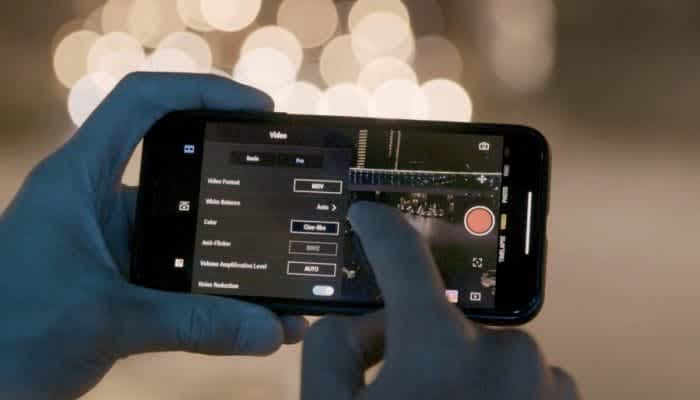
Story Mode uses a combination of preset shooting patterns and camera motions to help you create professional-quality video whenever you want. Exclusively-designed filters and soundtracks give a unique finish to your footage.
Pro mode lets you manually adjust camera parameters and adjust exposure. Powerful imaging capabilities also capture RAW format photos and D-Cinelike videos, retaining rich detail and allowing more room for post-processing, while My Story lets you set the tone of your video with templates, filters, music, and watermark stickers in a single tap.
MODES AND FEATURES
The Hero 7 Black and the Osmo Pocket come with some really cool features and modes.
GoPro Hero 7 Black Modes and Features
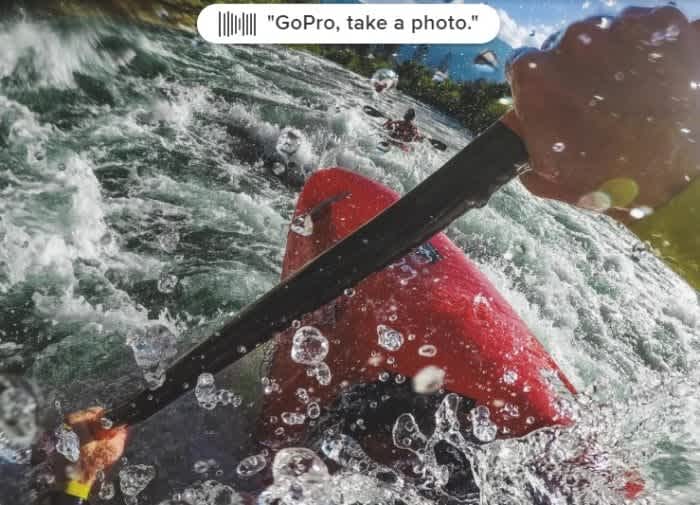
Voice control on GoPro Hero 7 Black.
Burst: Captures up to 30 photos in one second.
Night Photo: Sets the length of time that the shutter is open for night shots (up to 30 seconds). The default setting is Auto.
Looping: Continuously records video for a set interval and lets you save only the moments that you want.
Time Lapse Photo: Captures a series of photos at specified intervals.
Time Lapse Video: Creates a video from frames captured at specific intervals for a fast-motion effect.
TimeWarp Video: Capture super stabilized timelapse videos while you move about a scene. Increase the speed up to 30x to turn longer activities into shareable moments.
Night Lapse Photo: Captures a series of photos at set intervals when there is minimal light. The shutter remains open longer to let in more light in dark environments.
Slo-Mo: Slow things down by up to 8x.
Photo Timer: The photo timer makes it easy to grab a GoPro selfie or group shot with your whole crew in the frame.
Voice-control function.
Osmo Pocket Modes and Features
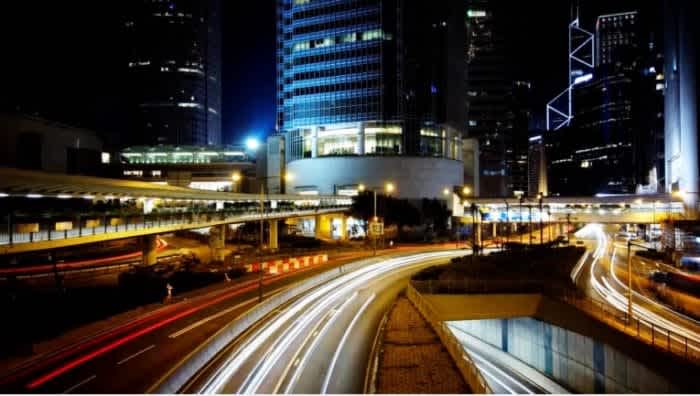
Motionlapse/Timelapse on the Osmo Pocket.
FPV: First person view mode follows the gimbal's orientation to film thrilling actions shots with smooth results.
ActiveTrack: Just tap on a subject and ActiveTrack follows. Entering Selfie mode automatically enables FaceTrack, keeping you in the centre of the shot.
3x3 Panorama: Capture your destination with breathtaking definition and detail.
Motionlapse_: Squeeze a beautiful day into a single shot. Timelapse turns hours into second and_ Motionlapse adds smooth camera movement for dramatic effect.
NightShot: Osmo Pocket automatically detects and illuminates low-lit scenes, resulting in brighter photos. You can also take tripod-free 2-3s handheld long exposure shots in Pro mode.
One of the impressive things about the former is the voice-control function. Say one of 16 commands, including 'GoPro, take a photo' or 'That was sick' to tag a video. It's mightly impressive and very handy, particularly when you're embroiled in an intense activity and have got your hands full.
The Hero 7 Black is also the first GoPro that can livestream to sites like Facebook and YouTube.
Other modes include Slo-Mo, Time Lapse and Night Lapse.
The Osmo Pocket has numerous modes too, such as 3x3 panorama, NightShot and Motionlapse.
But perhaps the jewel in its crown is ActiveTrack - a real highlight, especially for vloggers. This really cool feature allows you to tap on a subject and ActiveTrack intelligently follows. Entering Selfie mode automatically launches FaceTrack, keeping you in the centre of the picture.
ACCESSORIES
As mentioned previously, both the GoPro Hero 7 Black and the Osmo Pocket are compatible with a range of accessories.
Add-ons for the GoPro include a rechargeable battery, a hand-wrist strap and various mounts.
As for the Osmo Pocket, accessories include a wirless module, extension rod and filters set.
WHO IS KING OF THE RING?
There's no doubt about it - the GoPro Hero 7 Black and DJI Osmo Pocket are seriously impressive bits of kit and both have more than creditable claims to the throne.
Both have their own quirks - voice control on the GoPro and ActiveTrack on the Osmo Pocket - which make them special in their own right.
There's also the question of suitability for the task in hand. There's an argument that the GoPro is ideal for intense action shots - something that their cameras have become well known for over the years. But the Osmo Pocket looks a better shot for vloggers and general day-to-day users.
There's also a strong case that the Pocket's mechanical gimbal yields superior results than the electronic image stabalisation of the Hero. And the ability to take the Osmo to depths of 60m in water - albeit with the addition of a waterproof case - makes it a robust little tool.
